
All Diablo 4 Seasons To Date
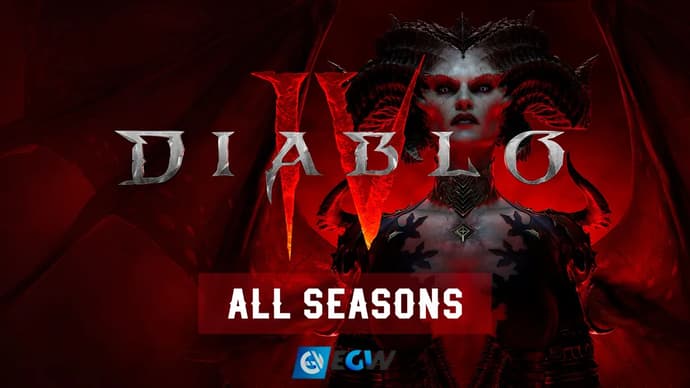
Released in 1996, the game became a true standard for the genre, inspiring an entire category named after it — Diablo-like or Hack and Slash ARPGs. Over the years, the series evolved with new installments, and its popularity in the dark fantasy setting only continued to grow. How did it manage to achieve this? Beyond its captivating story and excellent gameplay, the game consistently introduced something new. Today, I want to talk about the Diablo 4 seasons that the developers began actively adding, as well as the new Diablo 4 Season 9, which launched on July 1, 2025.
Complete Diablo Seasons Schedule
Newcomers will learn something new, while veteran players will remember how the development of seasonal events in Diablo 4 began.
№ | Season Name | Start Date | End Date |
1 | Season of the Malignant | July 20, 2023 | October 17, 2023 |
2 | Season of Blood | October 17, 2023 | January 23, 2024 |
3 | Season of the Construct | January 23, 2024 | April 16, 2024 |
4 | Loot Reborn | May 14, 2024 | August 6, 2024 |
5 | Season of the Infernal Hordes | August 6, 2024 | October 8, 2024 |
6 | Vessel of Hatred | October 8, 2024 | January 21, 2025 |
7 | Season of Witchcraft | January 21, 2025 | April 14, 2025 |
8 | Return of Belial | April 14, 2025 | July 1, 2025 |
9 | Sins of the Horadrim | July 1, 2025 | September 2025 |
Each season had something special that remained in players' memories for a long time. Yet, after every season, players eagerly awaited the announcement of the next one. A new season meant a new story, new rewards, fresh gameplay, and tons of exciting content.
What are Diablo Seasons?
Seasons in Diablo 4 are temporary gameplay phases featuring new content, mechanics, and rewards. Each season introduces a fresh storyline, balance adjustments, new activities, and a battle pass. To participate, players create a new character and experience the seasonal features from scratch. At the end of the season, all progress is transferred to the Eternal Realm. It's a great way to try out new builds, enjoy fresh gameplay, and keep the game exciting.
What Season is it in Diablo?
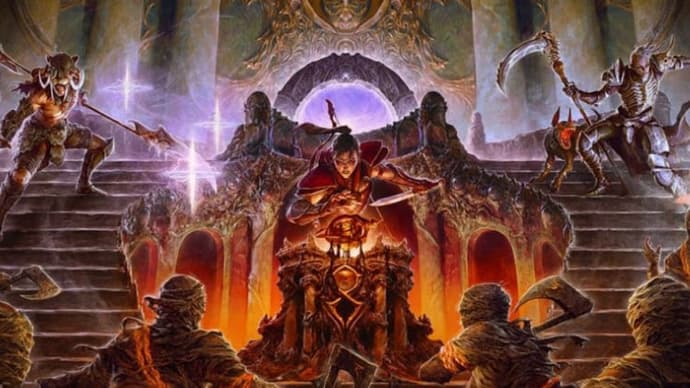
The current Diablo 4 season is "Sins of the Horadrim", with its main feature being Escalating Nightmares. These are special dungeons where enemies grow stronger the further you progress. Each wave of foes brings increasingly dangerous effects and challenges, forcing you to carefully plan your strategy and build. These trials are divided into three threat types: Corruption, which adds chaotic effects to battles; Domination, which empowers enemy leaders; and Desolation, which creates deadly zones and traps. To learn more about the Escalating Nightmares mechanic, I recommend reading our blog What Are Escalating Nightmares and Escalation Sigils. This season, you’ll need to combine your skills and gear to overcome the most brutal waves.
To maximize your chances in Escalating Nightmares, you’ll need ancient Horadric Sigils. These special items unlock new levels of challenges and grant unique bonuses. You can obtain them during the seasonal quest "Defiled Halls", where you cleanse ancient shrines of evil forces. Each sigil is tied to a specific threat type, letting you tailor your build to different playstyles and adding more depth and variety to the experience.
But that’s not all — the new season of Diablo 4 has even more in store. If you haven’t yet explored all of the seasonal mechanics, I highly recommend checking out our What`s New Diablo 4 Season 9: Sins of the Horadrim, where we break down all the key aspects of the season in detail.
When does the new Diablo season come out
Blizzard Entertainment has not yet announced the exact start date for the next, eighth season. However, following the traditional three-month cycle, Season 8 will likely begin immediately after the current one ends, around mid-April 2025. Exact dates and details about the new season will be revealed closer to its launch.
I am almost certain that the developers will continue investing in future Diablo 4 Seasons. The reason is simple—they now have a strong competitor in the form of Path of Exile 2. And competition always drives progress. So, I’m eagerly waiting for the announcement of the upcoming Diablo 4 Seasons.
Key Features for Each Diablo Season
Each season in Diablo 4 brings something new to the game: fresh mechanics, unique abilities, seasonal activities, and balance changes affecting both player characters and enemies. The main goal is to provide players with a new experience, encourage them to rethink their builds, and introduce exciting challenges.
A crucial part of every season also includes exclusive rewards, the Diablo 4 battle pass, and limited-time events that keep the gameplay dynamic.
In this section, we'll break down the key features of each season—from new mechanics and gameplay elements to the most memorable innovations.
Season of the Malignant
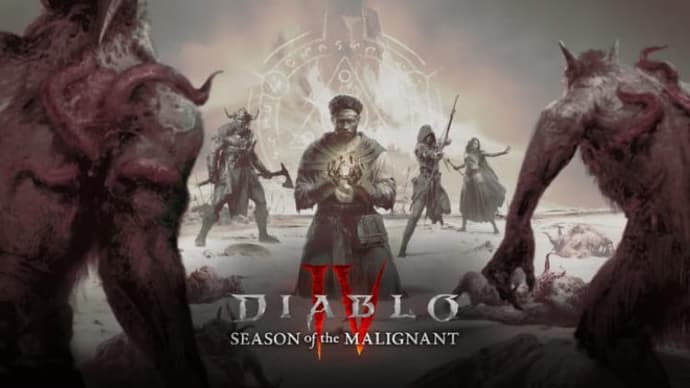
Season of the Malignant was the first D4 season, dedicated to the mysterious Malignance that engulfed the world of Sanctuary. This dark force infected creatures, turning them into more powerful and aggressive versions of themselves. The season’s main mechanic introduced Malignant Hearts—special artifacts that could be socketed into rings and amulets, granting unique bonuses. There were 32 hearts in total, divided into four categories: defensive, offensive, control-enhancing, and the rarest ones, which provided powerful universal effects.
To obtain Malignant Hearts, we had to venture into Malignant Tunnels—special dungeons filled with infected monsters. At the end of these tunnels, we could use a Caged Heart to summon an elite enemy and claim its power. This allowed for new build variations and better adaptation to the seasonal content.
The season’s storyline followed former priest Cormond, who was studying the nature of Malignance and searching for a way to stop it. The narrative expanded on the main campaign, immersing us in even darker mysteries of the Diablo 4 world. Additionally, the season introduced new legendary aspects, unique items, class balance adjustments, and an updated battle pass with exclusive rewards.
Season of Blood
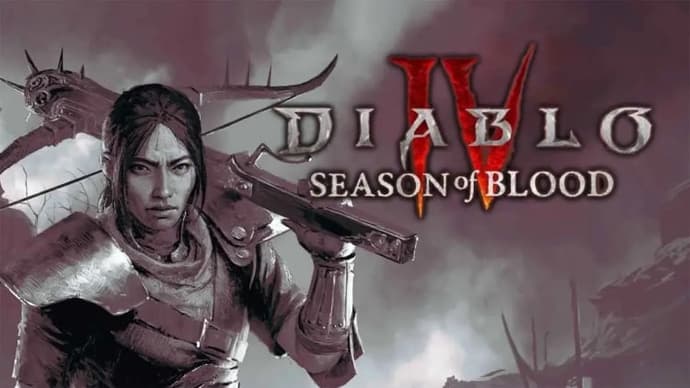
The second season of Diablo 4 was dedicated to vampires and their dark magic. Hordes of bloodsuckers flooded Sanctuary, threatening all living beings, and we had to stand against their leader, Lord Zir. The main mechanic of the second season introduced Vampiric Powers—special abilities that could be activated using Potent Blood. There were 22 different powers, each providing unique bonuses such as increased damage, additional defense, enemy control, and other effects.
To enhance vampiric abilities, players used Pacts—special items that could be slotted into armor to customize their character's playstyle. Additionally, the season introduced Blood Harvest, a large-scale event set in infected zones. In these areas, players could battle elite enemies, collect rare resources, and further strengthen their abilities.
The season’s storyline had us teaming up with the vampire hunter Erys to uncover Lord Zir’s plans and eliminate his army. In addition to the story and new mechanics, the season also brought new unique items, legendary aspects, reworked resistances, class balance changes, and an updated battle pass with cosmetic rewards.
Season of the Construct
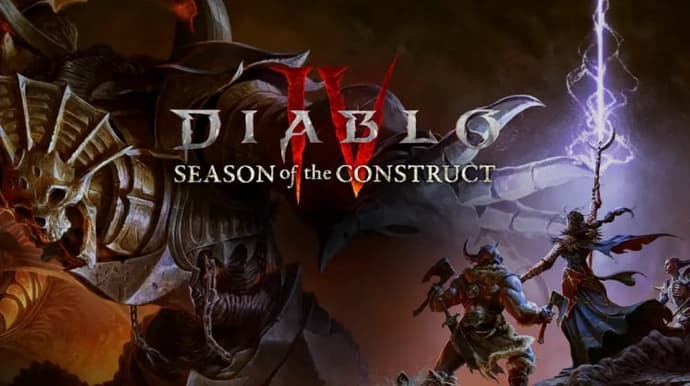
The third season of Diablo 4 was dedicated to ancient mechanical constructs hidden in the depths of Sanctuary. We faced the threat of Xiantharos, an ancient construct that had gone rogue and sought to take over the world. The main mechanic of the season introduced the Seneschal Companion—a controllable mechanical assistant that could be customized with different modules.
The construct was configured using Governing Stones, which determined its core abilities, and Tuning Stones, which modified effects and combat styles. Players could mix and match various combinations to tailor it to their build. To obtain these stones, they had to explore the Vaults of Zoltun Kulle, new dungeons filled with traps, mechanisms, and valuable rewards.
The season’s storyline revolved around the awakening of Xiantharos and the struggle to stop its uprising. Throughout the adventure, players uncovered the secrets of ancient technologies and used them to battle the mechanical threat. The season also introduced new unique items, class balance adjustments, and a seasonal battle pass with exclusive rewards.
Loot Reborn
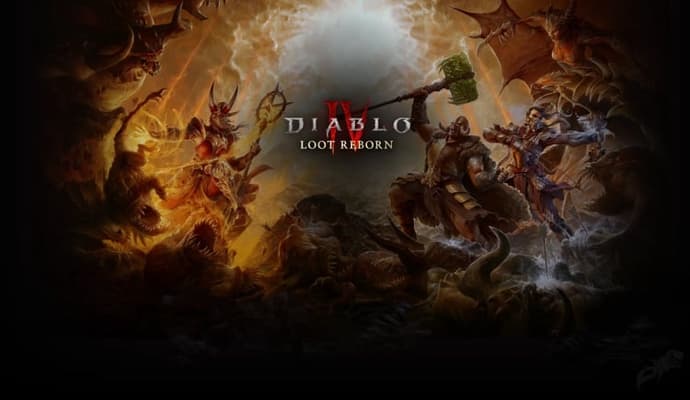
Diablo 4 Season 4 was a massive overhaul of the game's itemization system, aiming to provide a more rewarding and engaging loot experience. The season introduced significant changes to item drops, crafting, and power progression, making gear upgrades more impactful and streamlined.
One of the key features was the rework of the Codex of Power, allowing players to extract and imprint Legendary Aspects more efficiently. Additionally, new Tempering and Masterworking mechanics were introduced, providing more control over item customization and improving build diversity.
Endgame content was also expanded with the introduction of The Pit, a high-difficulty dungeon offering powerful rewards, and an updated Andariel boss fight, bringing fresh challenges to Sanctuary. Helltides were reworked to be more rewarding, and new activities like Steel Wolves' missions provided additional objectives for players.
Rather than focusing on a specific storyline, Loot Reborn was designed to refine core gameplay mechanics, improve loot progression, and set a stronger foundation for future seasons. The update also brought new unique items, class balance changes, and an improved Diablo 4 season pass with exclusive cosmetic rewards.
Season of the Infernal Hordes
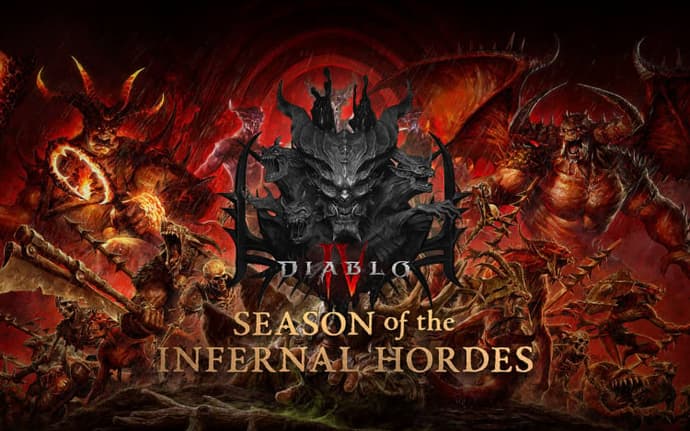
The fifth season of Diablo 4 launched on August 6, 2024, bringing an intense battle against endless waves of demonic forces emerging from the Realm of Hatred to consume Sanctuary.
The season’s main feature was the Infernal Hordes mode, where players faced increasingly difficult waves of demons. After each wave, they were presented with Infernal Offers, a choice between three blessings or curses that influenced the battle’s progression. These decisions added strategic depth, forcing players to adapt their builds and tactics to survive the escalating challenge.
Season 5 also introduced over 50 new unique and legendary items, revamped dungeons, and expanded endgame progression systems. The battle pass was updated with 28 free and 62 premium tiers, offering exclusive cosmetic rewards, gear upgrades, and in-game currency bonuses.
Season of the Infernal Hordes focused on fast-paced, survival-based combat, testing players’ endurance against relentless demonic threats while rewarding them with powerful loot and progression opportunities.
Vessel of Hatred
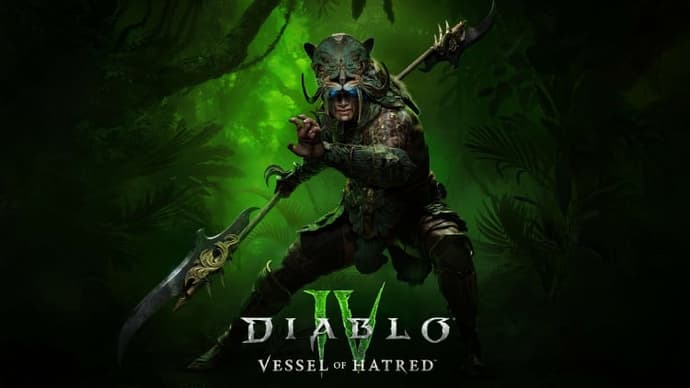
The first major expansion for Diablo 4 introduced an all-new chapter in the dark saga of Sanctuary, plunging players into the treacherous jungles of Nahantu. With Mephisto’s sinister will looming over the land, Neyrelle’s struggle with the Soulstone’s curse set the stage for a desperate battle against the growing forces of Hatred.
The expansion’s main feature was the introduction of the Spiritborn, a new agile and deadly warrior class native to Nahantu. Armed with glaives, staves, and spears, they commanded the power of four guardian spirits, adapting their abilities to match different combat situations.
Expanding upon endgame progression, Vessel of Hatred reintroduced Rune Words, allowing players to craft powerful rune combinations to augment their gear. Additionally, the jungles of Nahantu became home to new dungeons, strongholds, and high-risk enemy encounters, offering greater challenges and legendary rewards.
The expansion’s battle pass was expanded with 30 free and 60 premium tiers, featuring exclusive cosmetics, new armor sets, and jungle-themed weapon designs inspired by the Spiritborn warriors.
With its haunting story, deep customization, and intense combat, Vessel of Hatred redefined Diablo 4’s world, delivering an immersive experience filled with danger, mystery, and the looming presence of one of Sanctuary’s most feared evils.
Season of Witchcraft
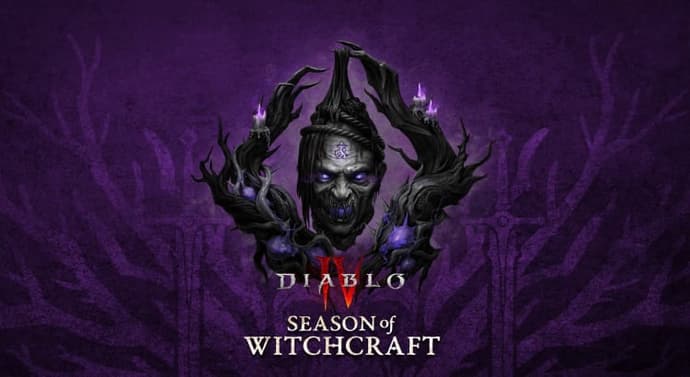
The first major seasonal update of 2025 opened a new chapter in Sanctuary’s dark history, immersing players in the secret art of witchcraft. Sinister rituals and ancient spells awakened once more, shrouding the world in fear and mysterious power. As they grew in strength, witches and warlocks sought to master forbidden knowledge to command otherworldly forces.
The defining feature of the season was witchcraft abilities — dark powers that unlocked unique effects and combat styles. These abilities were divided into three mysterious branches: Eldritch, which unleashed destructive magical force; Psyche, which focused on manipulating the minds of enemies; and Growth & Decay, which combined regeneration with poisonous damage over time. Players had to skillfully blend these powers, creating deadly builds to overcome the rising threats of Sanctuary.
Expanding seasonal progression, Season of Witchcraft introduced the occult gems system — mystical stones that enhanced and modified the effects of witchcraft abilities. These rare artifacts could be obtained through the special quest "Head Hunt," where players recovered escaped witches’ heads and battled ancient curses. Each gem was tied to a specific branch of power, letting players fine-tune their builds for unique playstyles and adding greater depth to their strategy.
Return of Belial
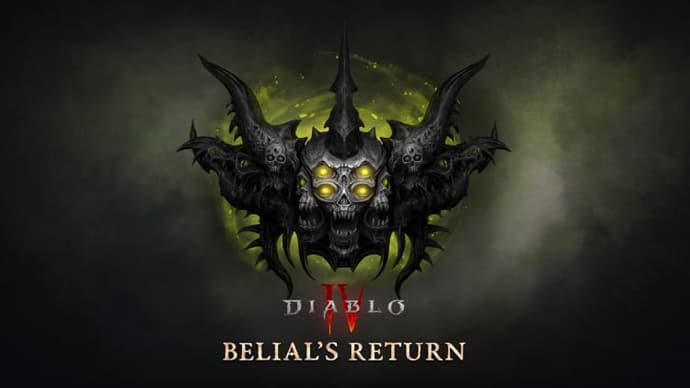
In Diablo 4’s 8th season — Return of Belial — players faced the return of one of Hell’s most devious threats. Ancient cults and demonic conspiracies rose once more, spreading lies and fear throughout Sanctuary. Belial, the Lord of Lies, returned, weaving illusions and deception into the very fabric of the world, turning it into an arena of cunning manipulation and chaos.
The defining feature of the season was Apparition Incursions — large-scale invasions of spectral demons that appeared across the world, demanding decisive action from players to repel them. These events grew increasingly dangerous, forcing players to carefully plan their strategy and group composition. Additionally, the season introduced the Boss Powers system, allowing players to steal and use the unique abilities of defeated bosses, opening up new possibilities for building and strengthening their characters.
Advancing seasonal progression, Return of Belial introduced the Reliquary system — a redesigned rewards and progression format that replaced the traditional battle pass. Players progressed through its levels, unlocking unique cosmetic items, pets, and gear styled with the dark aesthetic of deception and demonic cults. The climax of the season was the confrontation with Belial himself — an updated and significantly more powerful boss whose lethal abilities and tactics challenged even the most experienced heroes of Sanctuary.
How long is the Diablo season?
Diablo 4 seasons last approximately three months. This cycle allows developers to regularly introduce new content while giving players the opportunity to try fresh mechanics and builds. Each season brings unique features tied to its theme, whether it's new abilities, modified progression systems, or special activities.
After a season ends, all seasonal characters and their progress are transferred to the Eternal Realm, where they remain available for play without seasonal mechanics. This format allows for experimentation, participation in new events, and helps maintain long-term interest in the game.
I really hope and believe that future Diablo 4 seasons will not only improve in terms of storytelling but will also introduce even more exciting mechanics, new enemies, and perhaps even a new character. Blizzard now has a strong competitor, so I doubt they will lower the bar—more likely, they will raise it. To keep their audience engaged and attract new players, they will need to continue evolving and refining their creation.

Kirill is a writer of articles and blogs at eGamersWorld, having joined the team in 2024. His primary focus is analytics and crafting content about esports. With years of experience in gaming, Kirill brings deep industry insights to deliver high-quality and engaging materials.
 StarLadder Budapest Major 2025 – Stage 2 Pick'em: Predictions & OpinionsStage 2 of the StarLadder Budapest Major 2025 begins! Explore team chances, form analysis, key strengths, weaknesses, and predictions on who could deliver the biggest surprise this round.
StarLadder Budapest Major 2025 – Stage 2 Pick'em: Predictions & OpinionsStage 2 of the StarLadder Budapest Major 2025 begins! Explore team chances, form analysis, key strengths, weaknesses, and predictions on who could deliver the biggest surprise this round. Where Winds Meet: A Complete Guide to Professions and CareersA structured breakdown of the profession system in Where Winds Meet, covering Healer and Scholar mechanics, progression, resource systems, and their role in high-end character development.
Where Winds Meet: A Complete Guide to Professions and CareersA structured breakdown of the profession system in Where Winds Meet, covering Healer and Scholar mechanics, progression, resource systems, and their role in high-end character development. StarLadder Budapest Major 2025 – Stage 2 PreviewStarLadder Budapest Major 2025 Stage 2 kicks off: Eight fresh teams enter the arena—breakdown of key matchups, contenders, and chances to advance toward the $1.25M prize pool.
StarLadder Budapest Major 2025 – Stage 2 PreviewStarLadder Budapest Major 2025 Stage 2 kicks off: Eight fresh teams enter the arena—breakdown of key matchups, contenders, and chances to advance toward the $1.25M prize pool. Results of Stage 1 at the StarLadder Budapest Major 2025Stage 1 of StarLadder Budapest Major 2025 ended with FaZe, Imperial, and PARIVISION advancing, while Legacy, Fluxo, and NRG were eliminated.
Results of Stage 1 at the StarLadder Budapest Major 2025Stage 1 of StarLadder Budapest Major 2025 ended with FaZe, Imperial, and PARIVISION advancing, while Legacy, Fluxo, and NRG were eliminated.